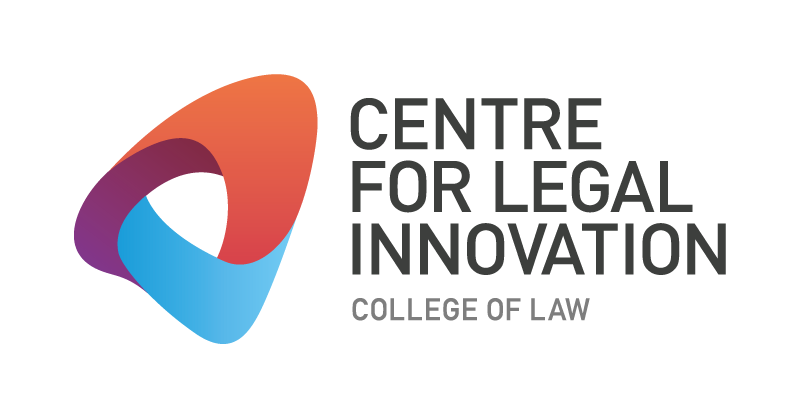Full disclosure up front. I don’t write a lot of articles. In fact, since leaving private practice almost a decade ago, I have not written a single article. For me, putting the metaphorical pen to paper feels a bit strange—I’m used to just talking to people. As a result, if it sounds like I am talking to you, rather than writing an article, it is because I am. I hope to make this piece a conversation starter, with lots of questions (and perhaps a few answers).
So, to get us started, ask yourself the following—not counting the lawyers themselves (and their impressive brains), what is the most valuable asset your legal team has? Hopefully, if you’ve read the title of this article, you might have guessed or even know the answer—knowledge management (KM).
But what is KM, why is it important and, finally, how can we deliver a successful KM strategy?
A bit about KM
KM can broadly be defined as the way in which a team, function or organisation captures and shares the knowledge, learnings and experience of its team members. In practical terms, as lawyers, much of our learning happens on the job as we read and think and process information. Traditionally, this knowledge has only been shared on a need to know basis and often verbally. The Corporate Legal Operations Consortium refers to this as tribal knowledge and considers that the overreliance on tribal knowledge “ fails scale as the team grows or changes, forcing costly re-work .”
Good KM is about extracting that learning from the lawyer’s brain and ‘institutionalising’ it or capturing it for the team or the organisation so that it can be used by others now and in the future. Some frequently cited examples demonstrating good KM include:
- Regular meetings or knowledge sharing forums
- Document management systems with strong search capabilities
- Well-populated intranet site with self-help tools and FAQs and,
- A precedent suite for the organisation’s most frequently used templates.
Why is KM important?
In short, good KM is a way of working that saves time, improves outcomes by making it easier to find answers and builds a collaborative and sharing culture. To expand:
Benefits of good KM for the organisation:
- Better capture of the organisation’s intellectual capital,
- The ability to provide consistent legal advice – the team (now and in the future) is ‘playing from the same playbook’,
- Better use of time and resources – capture what has been done and build on it, rather than re-invent the wheel.
Benefits of good KM for the lawyer:
- Time savings, by having a trusted and preferred source of truth to go to (rather than starting from the beginning)
- The ability to advise consistently and confidently (knowing what has been advised historically)
- Better connection with the legal team and the experts in it
- Use the time to be more solutions focused, so look good!
One case study I often use to explain the benefits of KM is from the perspective of a new starter. Think about the range of items on your checklist you would step a new starter through:
- The way the team works
- How you manage matters and external firms
- How you manage documents and emails,
- What precedents and templates you use, and
- What frameworks you have to measure team targets and performance.
Do you have all these materials in a central repository to ensure you cover everything and then leave a pack with the new starter to refer back to? Continuing with the case study, imagine a few weeks in and the new starter is contacted for urgent advice—do they know where to go for previous advice or a relevant, up-to date precedent that could give them the answer they are after quickly and efficiently or do they spend all day researching an answer or playing telephone tiggy with a lawyer on leave who might be able to help?
How to develop a successful KM strategy
Well done on getting this far. It is possible that what you have read so far is not new and hopefully most, if not all, of it makes sense. But now for the hard part … how to get there? How do we develop and implement a successful KM strategy?
Let me begin by saying that there is no single KM strategy that works for all in-house teams alike. The strategy you adopt will need to take into account various factors including your corporate strategy, the composition of your team, the technology available and the budget or resourcing options. There is no point developing a strategy that doesn’t take these things into account, so make sure you have them front of mind.
So, noting the parameters of your business case, I believe some common principles apply to any good KM strategy.
Principle one: Develop and embed a culture focused on KM
I’ve heard Origin’s outgoing chairman state on numerous occasions, “culture eats strategy for breakfast” (and he may well have been quoting someone else at the time). I couldn’t agree more, having worked on a number of significant change pieces over the years. If you want to develop, implement and, most importantly, embed a new way of working—here a knowledgebased way of working—you need to develop the cultural piece that supports that first, before getting into any of the mechanics.
So, what does a culture that is focused and committed to KM look like? Again, it will depend on the team, but it’s a good idea to ask yourselves this question upfront and document the answer. At Origin, we wrote a list at the start of the year calling out what success would look like for this principle. The exercise was incredible because it helped us articulate exactly what we meant when we talked about a culture committed to KM. It included statements such as:
- I always choose to start with the knowledge we have
- I provide legal services when fully informed from our knowledge basis
- I demonstrate the use of our precedents and guidance notes
- I always share knowledge from learnings
- I continually service our team’s knowledge base to maintain and improve, including proactively managing data relevant to me
- I advocate for this culture with my Origin Legal colleagues.
Principle two: Design and implement strong and clear infrastructure and processes to capture and share your knowledge.
Once you have the cultural piece in place, the next things that lawyers quite rightly want are a clear framework and processes for tipping in and taking out knowledge. These infrastructure and processes should foster the culture by making it easy to share and capture knowledge, rather than placing too many layers of admin (yuck) on the lawyers.
When you turn your mind to what infrastructure you have or can develop, think of:
- A document management system – not just having one, but ensuring your team know how to use it to file knowledge and find knowledge simply and easy
- Team protocols and guidance notes – at last count, I drafted 15 guidance notes on things the Legal team did but only knew how to do by word of mouth
- Approvals and review processes for things such as precedents and guidance notes – consider not just the document itself but the ownership piece and the rules around amending, reviewing and updating, and
- Team meetings, forums and hubs to capture FAQs or frequently used materials.
The infrastructure and processes should, ideally, be designed centrally (but with input from the team) so that there is a coordinated and centralised approach.
Principle three: Be thoughtful about how you populate and contribute to your team’s knowledge.
Finally, we arrive at building up the knowledge itself. In my view, you should only start talking about what is in the knowledge base once you have a clear path forward on culture and infrastructure, otherwise the knowledge you build up is just as likely to disappear or fall into disuse.
Building up the knowledge base can and should be both organic and strategic:
- The organic knowledge base will be the incidental knowledge that your team acquires through their day-to-day work—learning about a new area of law, a new part of your business. Capturing this should be easy and free flowing and you probably don’t want too much ‘infrastructure’ in the way of approvals or processes to prevent it.
- The strategic knowledge base will be the key documents that your team identified will help deliver legal services well, such as precedents, guidance notes and self-help tools. They may involve working with your business partners to identify areas of high volume or need, or high risk to the business. For these, you will need both a prioritisation plan (of course we all want it done yesterday!) and clear processes for development, review, approval and maintenance.
In both instances, your team will need to know about the existence of the knowledge and how to use it, so don’t forget to close this loop.
Other considerations:
A few more practical considerations before we wrap up:
- First, think about how you resource a KM strategy. Do you have an individual who can lead the development and implementation of the KM strategy? If you don’t have a dedicated Legal Operations person in your team, you could consider this an incredible development opportunity for a team member, or else think about the many external consultants that can assist.
- Second, how you are going to engage and motivate the team to participate in the KM strategy? What levers do you have at your disposal to incentivise the successful performance? For example, bonuses, rewards and recognition, regular check-ins and visual management boards all help keep the team accountable and on track.
Conclusion
In summary, KM is incredibly important for building a mature Legal in-house team and when done well, can deliver tremendous benefit to your organisation and your lawyers. While there is no blueprint for success, some guiding principles will help you get there, namely:
- Develop and embed a culture focused on KM,
- Design and implement strong and clear infrastructure and processes to capture and share your knowledge, and
- Be thoughtful about how you populate and contribute to your team’s knowledge.
So, there you have it, the start of a very important conversation about KM. I’d love to hear what you think.

Katrina Gowans
As the National Legal Operations Lead for Origin Energy, Katrina describes her role as helping the legal team manage change. She has previously held the role of Corporate Lawyer at Origin and before that, Competition and Consumer Lawyer at King & Wood Mallesons. At Origin Energy Katrina has successfully led the implementation of a fully integrated matter and document management system, underpinned by a transformation program to change the way the team worked. Katrina is a member of the Centre for Legal Innovation Advisory Board.
This post was first published as an article in the Australian Corporate Lawyer magazine Volume 30, Issue 4 – Summer 2020 and is republished here with permission.

